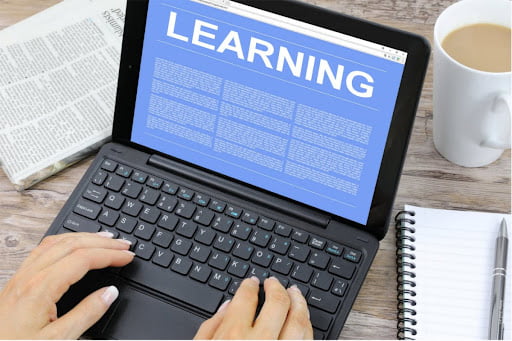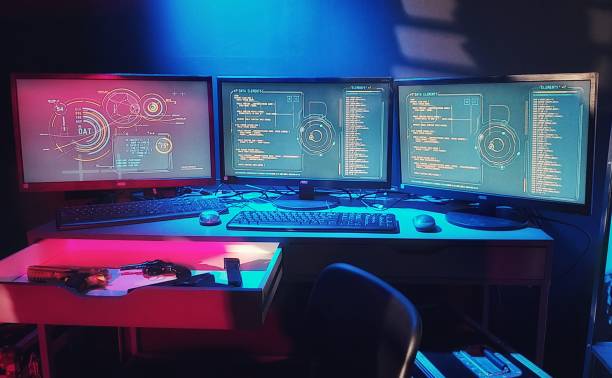Innovative Tools for Education: Leveraging Technology to Drive Student Engagement

In today’s digital era, engaging learners presents both challenges and opportunities. With many distractions just a click away, educators are turning to innovative tools to capture and hold students’ attention.
This article looks into cutting-edge educational tools and aims to demonstrate their transformative power in making learning interactive, impactful, and aligned with the digital age.
Transforming Learning Through Technology
Technology has reshaped education, introducing e-learning platforms that offer flexibility and access to a wealth of information and learning opportunities. For instance, it enables institutions to offer one year graduate programs, allowing professionals to advance their careers without pausing their professional lives.
The rise of technology in education has made higher learning more accessible than ever. Today, affordable online degrees provide options that allow students to obtain quality education without the high costs associated with traditional programs. For those balancing work and other responsibilities, these online programs offer a convenient way to pursue career advancements without major disruptions.
In fact, many affordable online degrees are designed with flexible schedules and tailored content, making it easier for learners to complete their studies at their own pace while still gaining the skills and credentials needed to compete in today’s job market.
Beyond convenience and affordability, technology infuses education with interactive videos, discussion boards, real-time feedback, and even AI, breaking down traditional barriers and fostering an engaging learning environment. As we look to the future, technology has huge potential to improve and personalize education even more.
Innovative Tools for Enhancing Student Engagement
Technology is now present in so many aspects of education, be that in primary education or graduate school In fact, even those in graduate schools hoping to land the highest paid business majors benefit from it by allowing them to further their education without taking a leave from work.
Technology has also made education more accessible. Educators, however, often find it challenging to engage their students. So let’s talk about the tools some educators use to enhance engagement.
Interactive Learning Platforms
In a digital era where nearly 93% of students are comfortable using technology for learning, the challenge lies in keeping them engaged. Interactive learning platforms offer a solution by providing features that cater to individual learning needs. Key features include:
- Personalization: Allows educators to tailor learning content and pace to fit each student’s needs, thus making it more personalized.
- Real-time Feedback: Provides immediate responses to students’ inputs or answers, helping them understand their progress and areas for improvement on the spot.
- Interactive Simulations: Offers hands-on, virtual experiments or scenarios where students can apply concepts in simulated environments, enhancing understanding through experience.
- Multimedia Content: Incorporates videos, audio, images, and animations to present information in diverse and engaging ways, catering to different learning preferences.
Virtual Collaborative Spaces
Virtual collaborative spaces like Microsoft Teams, Slack, and Zoom have become essential in maintaining the continuity of education, especially during the COVID-19 pandemic. These tools allow collaboration and live classes regardless of geographical and logistical barriers.
Educators experienced challenges creating a unified classroom experience with these virtual spaces, especially with students’ varying locations and bad internet connections. These challenges, however, prompted schools to evaluate their approach to online education and think of new ways to use virtual collaborative spaces for learning.
Virtual collaborative spaces have proven their worth in making education more accessible and flexible. Experts even see them as staples of learning.
Gamification in Education
The idea behind gamification in education is to make learning fun by adding game-like elements, such as points, badges, and competitions, to lessons. For example, students can earn points for timely homework submissions or badges for mastering a topic.
Gamification tools help teachers track points for assignments or award badges for achievements. Leaderboards help students determine how they are doing compared to others while encouraging friendly competition and a sense of pride in their accomplishments.
Some would say that gamifying learning is costly. But this is a myth we have long debunked. Adding simple game features like quizzes and progress bars does not have to be expensive.
Take note, however, that gamification is not one-size-fits-all. Most students find it interesting to learn when they can get points, move up in rankings, and get feedback immediately. However, characters or direct competition do not always work and might even make students less interested. Understand the learners before deciding which game elements to implement.
Artificial Intelligence
By focusing on each student’s specific needs, tastes, and how they learn best, artificial intelligence (AI) tailors learning experiences for each student. This customization increases student engagement and helps them remember what they learn. Meanwhile, AI analyzes educational data to help educators improve teaching and student performance.
AI is used in several ways in education, such as in assessments, predicting student success, supporting intelligent tutoring systems, and managing how students learn. A recent trend shows a significant increase in the use of AI in research within higher education. A noticeable shift towards Asia, especially China, overtakes the US in this field.
AI has been helpful in education, but the Office of Educational Technology advises caution. AI can improve personalized learning and flexibility, according to the office. However, data privacy and unfair AI decisions are risks. To ensure safe and successful AI integration into education, they recommend teacher involvement. AI should assist teachers without compromising their personal touch.
Analytics and Personalized Feedback
Analytics offer a powerful way to create personalized learning experiences. Educational platforms can determine student preferences by analyzing data, helping to keep students interested and improving academic performance.
Meanwhile, learning analytics (LA) helps teachers tailor lessons to multiple students to ensure everyone learns. It predicts student performance and provides immediate feedback, allowing teachers to quickly identify students who are excelling and those who need extra help.
However, using LA does not come without problems. There are worries about whether the data is always right, keeping student information safe, and ensuring the system is fair to everyone. Plus, relying too much on computers might mean missing out on other important ways of learning.
To make the most of LA, mixing it with what teachers know from seeing their students daily is best. Schools should also have clear rules about how they use and look after student data, and try to keep a good mix of digital and regular classroom learning.
Embracing Technology for Enhanced Engagement
Integrating innovative technological tools in education promises a more engaging, interactive, and effective learning environment. From personalized learning platforms to gamification and AI, these tools cater to the diverse needs of students, including those pursuing highly competitive fields.
As education evolves, these technologies enhance student engagement and prepare learners for a future where digital fluency is paramount. Educators are encouraged to embrace and adapt these tools, reflecting on their potential to transform the educational experience for all students.







